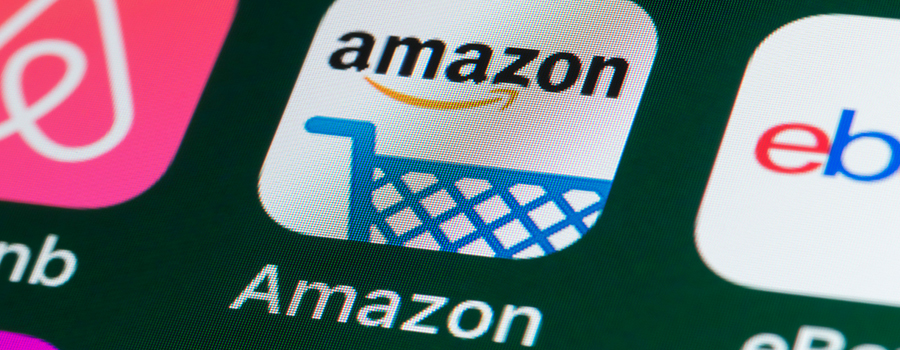
If you want to sell your products online, you have to be where the customers are. Increasingly, that means Amazon.
The retail giant accounted for 45% of U.S. e-commerce spending in 2019, with almost one in three Americans (more than 95 million) now holding a premium Amazon Prime membership, according to RepricerExpress.
Nearly half of shoppers said in a 2018 NPR poll that Amazon is their first stop when making an online purchase, meaning that if you're not on the platform, you're not being seen.
Despite its size and influence, Amazon's selling platform isn't just for big business—small companies can also excel on the platform with a little effort and thoughtful targeting.
Here are a few tips from Informatics' experts for starting your journey as an Amazon seller.
Becoming an Amazon Seller
Your first step to selling on Amazon is to register for an account, either as an "individual" or a "professional."
- The Individual plan is meant for users selling fewer than 40 items a month, with charges of 99 cents per item sold.
- The Professional plan is a flat fee of $39.99 a month with no per-item fee. It allows you to sell to Amazon business customers and provides access to more selling reports and services.
There are two ways to deliver the products you sell on Amazon: You can handle your own shipping and fulfillment (known as "merchant fulfillment"), or you can have Amazon do it for you (known as FBA, or "fulfilled by Amazon").
Each method has its own benefits and drawbacks, and must be weighed against your company's desired investment and effort level:
- Merchant fulfillment will require more work on your company's part, but allows you to control the entire customer journey and may even save you money.
- Amazon FBA services allow products to be sold through Amazon's Prime service (meaning better rankings and free shipping) and can scale effortlessly as your business grows, but also come with a number of fees, including fulfillment and inventory storage fees.
Note that Amazon restricts the sale of some products or product categories, meaning you may require specific approval or be restricted from selling as a third-party seller.
Learning & Listing
Once you're registered with Amazon, you will receive access to the platform's Seller Central portal. This dashboard gives you full access to sales reports, inventory and listings data, customer metrics and more. Make sure you're familiar with this tool, as you'll be spending a lot of time here as an Amazon business seller.
One of the main things you'll be doing on Seller Central is listing and managing your inventory of products. It's important to follow Amazon's best practices to help your products stand out among the tens of millions of products the company offers. Those include:
- Complete and accurate product descriptions
- Optimized keywords in your product titles and search terms
- Engaging photos and videos, including showing your product in a real-world use example
Build Your Reputation
Getting your products on Amazon is the easy part; growing your customer base and scaling your operations are harder.
A key part of this process is convincing your customers to leave you reviews, building your legitimacy and convincing others shoppers to give your brand a try. Products that see more page traffic and conversions will appear in organic Amazon searches more often, creating a self-sustaining cycle of improvement.
Amazon has its own automated system for following up with customers to request reviews, but don't be afraid to ask your customers directly, whether through your own communications or even inserts in your product shipments. Being proactive and solving problems for your buyers will also earn you better ratings.
Just remember that it is against the law to pay users to leave positive reviews online; tactics that spam or bombard users with requests or generate questionable reviews may also violate Amazon's terms of service, so make sure you're earning them through legit means and genuinely happy customers.
Scale With Paid Advertising
As your company grows, you may also want to explore paid search ads on Amazon to boost your brand presence. You can create a variety of sponsored product and brand experiences through the Seller Central portal, allowing you to differentiate yourself from the thousands of other products in your category. With the right targeting, you can create effective awareness campaigns that elevate your product over the competition in your given category.
If you need help developing your Amazon sales strategy, or just have questions about the best ways to accelerate your e-commerce journey, reach out to the digital marketing efforts at Informatics—we're all in on e-commerce!
